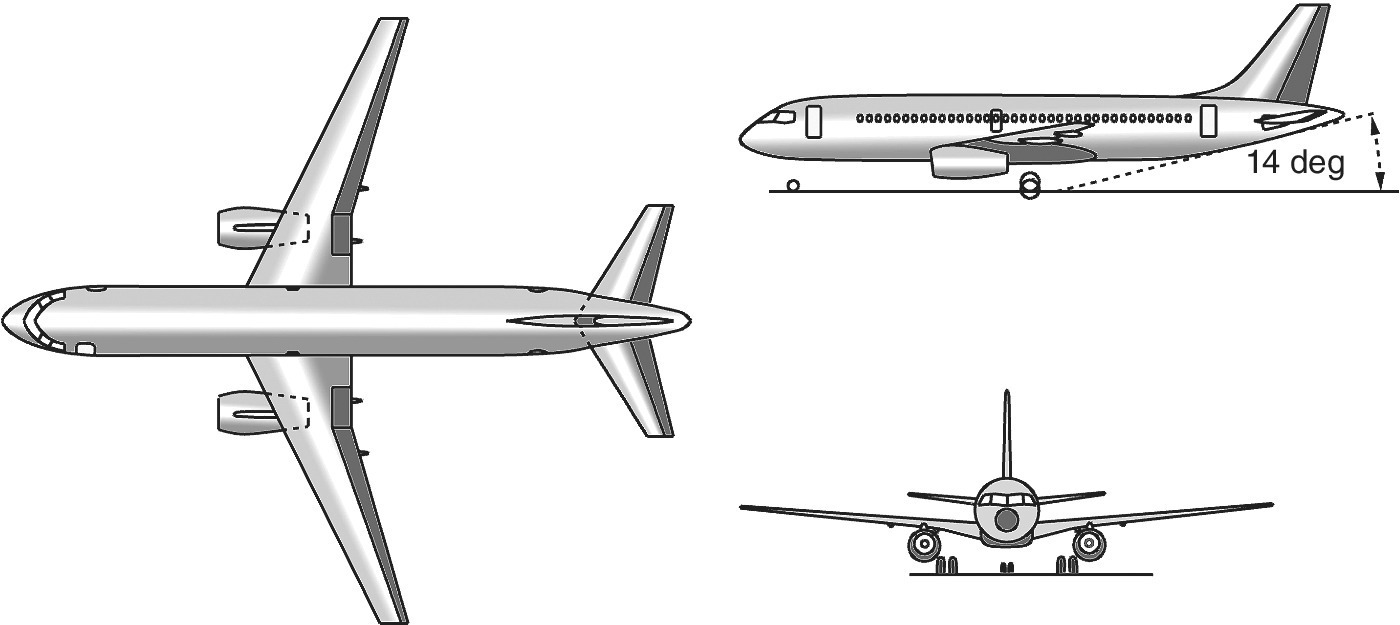APPENDIX EProblem Sets
Given below are two aircraft:
- Model Belfast (B100) – a Fokker F100 class, narrow body, 110‐passenger turbofan aircraft (FAR 25 certification); and
- Model AK4 – a four‐place utility aircraft (FAR 23 certification).
These aircraft serve as problem assignments for the readers to evaluate their full performances as covered in this book. Solutions for some problems are not supplied.
E.1 The Belfast (B100)
Readers may estimate aircraft performance of the B100 as given in the 3‐view diagram below. Related problem sets are assigned chapter‐wise. (We suggest copying the diagram, enlarging it to A3 size, and setting the scale of the drawing from the dimensions given below.)
E.1.1 Geometric and Performance Data
The geometric and performance parameters discussed herein were used in previous chapters. Figure E.1 illustrates the anatomy of the given aircraft. The B100 is a 5‐abreast, 110‐passenger aircraft.

Figure E.1 Belfast 100 (B100)
E.1.1.1 Customer Specification
- Payload = 110 passengers
- Range = 1500 nm.
- Takeoff distance (BFL) = 5200 ft.
- Landing distance = 5000 ft.
- Maximum speed = Mach 0.81.
- Maximum initial cruise speed = 455 kt (TAS).
- Initial en‐route climb rate = 3000 ft/s.
- Initial cruise altitude = 37,000 ft.
- Maximum dive speed (structural limit) = Mach 0.85.
- LRC altitude = 37,000 ft.
- LRC Mach = 0.75.
- CL at Mach 0.77 = 0.5.
- CL at Mach 0.82 = 0.43. ...
Get Theory and Practice of Aircraft Performance now with the O’Reilly learning platform.
O’Reilly members experience books, live events, courses curated by job role, and more from O’Reilly and nearly 200 top publishers.

